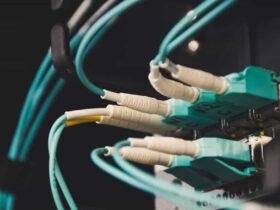MIDI keyboards, integral to the modern music production landscape, serve as versatile tools bridging musical creativity and digital technology. MIDI, an acronym for Musical Instrument Digital Interface, revolutionized music creation, allowing for seamless communication between electronic instruments and computers. These keyboards, far more than mere piano substitutes, offer an array of controls like knobs, pads, and faders, making them indispensable in studios worldwide. This article demystifies MIDI keyboards, guiding beginners through setup and operation while offering advanced tips for seasoned users. Whether you’re composing, recording, or performing live, understanding MIDI keyboards unlocks a world of musical possibilities.
How To Use Midi Keyboard?
Using a MIDI keyboard involves several essential steps, from setup to actual use. Here’s a simplified guide in five key steps:
1. Connect The MIDI Keyboard To Your Computer
Start by connecting your MIDI keyboard to your computer. This is usually done via a USB cable. Some older models might require a MIDI to USB interface. Turn on the keyboard once connected.
2. Install Necessary Drivers And Software
If your MIDI keyboard requires specific drivers, install them. Many modern MIDI keyboards are plug-and-play, meaning they don’t need additional drivers. Install a Digital Audio Workstation (DAW) if you haven’t already. This software is where you’ll control and manipulate the MIDI data from your keyboard. Configure Your MIDI Keyboard with Your DAW
3. Open Your DAW And Go To The MIDI Settings.
Ensure your DAW recognizes your MIDI keyboard. You might need to scan for new devices or configure the settings manually. Assign controls if necessary, such as mapping specific keyboard knobs or faders to functions within your DAW.
4. Start Playing And Experimenting
Begin playing the keys on your MIDI keyboard. You should hear a sound if you have a virtual instrument track armed in your DAW. Experiment with different sounds and instruments. Most DAWs come with a variety of virtual instruments, like pianos, synthesizers, and drums.
5. Record And Edit MIDI Data
Record your performance by arming a track in your DAW and hitting the record button. After recording, you can edit the MIDI data. This includes changing notes, adjusting timing, modifying velocities, and more.
Importance Of Midi Keyboards In Modern Music Production
MIDI keyboards hold a pivotal role in modern music production, offering a range of benefits that have transformed the way music is created and performed:
MIDI keyboards allow musicians to access a vast array of sounds and instruments through a single device. By controlling virtual instruments in a Digital Audio Workstation (DAW), a MIDI keyboard can emulate pianos, synthesizers, drums, and even orchestral instruments. This versatility enables composers and producers to create complex, multi-layered compositions without the need for numerous physical instruments.
MIDI keyboards seamlessly integrate with computer-based recording setups, making them essential tools in digital music production. They provide a tactile, intuitive interface for inputting MIDI data into DAWs, which is crucial for composing, arranging, and editing music.
Traditional instrument setups require significant physical space and investment. MIDI keyboards offer a compact, cost-effective solution by replacing the need for multiple instruments. They are ideal for home studios and small spaces, making music production more accessible to a wider range of artists and producers.
With features like velocity-sensitive keys, knobs, sliders, and pads, MIDI keyboards give artists precise control over the dynamics and expression of their music. This level of control is essential for crafting detailed, nuanced performances, particularly in genres where expressiveness is key.
MIDI keyboards streamline the composition and arrangement process. Composers can input notes more quickly and intuitively than using a mouse and keyboard, speeding up workflow and facilitating creativity. The ability to easily edit and manipulate MIDI data post-recording further enhances this efficiency.
Advanced Techniques And Tips
Delving into advanced techniques and tips for MIDI keyboard usage can significantly enhance your music production and performance skills. Here are some sophisticated strategies and insights:
- Layering Sounds: Utilize your MIDI keyboard to layer multiple sounds or instruments for richer, more complex textures. This can be done by assigning different sounds to various sections of the keyboard or using software to overlay sounds.
- Utilize Aftertouch: If your MIDI keyboard supports Aftertouch, use it to add expressiveness to your playing. Aftertouch allows you to control effects or parameters by applying pressure to the keys after they are struck, offering dynamic control over the sound.
- Custom MIDI Mappings: Tailor your MIDI keyboard to your workflow by customizing MIDI mappings. Assign knobs, faders, and buttons to control various functions in your DAW or virtual instruments, such as adjusting volume, panning, or applying effects.
- Incorporate MIDI Automation: Use your MIDI keyboard to record automation in real-time. Adjusting knobs and faders while recording can automate changes in your DAW, like filter sweeps or volume fades, adding life and movement to your tracks.
- Advanced Chording And Scales: Master advanced chording techniques and scale modes to enhance your compositions. Some MIDI keyboards offer scale and chord assist functions, which can aid in playing complex chord structures or unfamiliar scales.
- Split Keyboard Functionality: Take advantage of the split keyboard function if available. This feature allows you to assign different sounds to the left and right hands, essentially enabling you to play two instruments simultaneously.
- Experiment With Arpeggiators And Sequencers: Many MIDI keyboards come with built-in arpeggiators or sequencers. Use these tools to create rhythmic patterns and sequences that can add energy and drive to your music.
Tips For Maintaining Your Midi Keyboard.
Maintaining your MIDI keyboard is crucial for ensuring its longevity and optimal performance. Here are some practical tips to keep your MIDI keyboard in top condition:
Regular Cleaning: Dust and debris can accumulate on and between the keys over time. Use a soft, dry cloth to gently wipe the surface of the keyboard. For tougher grime, slightly dampen the cloth with water or a mild cleaner suitable for electronics. Avoid spraying any liquid directly onto the keyboard.
Key Cleaning: To clean between the keys, use a can of compressed air. This can help dislodge dust and particles that are not easily reached with a cloth. Be cautious not to push the debris further into the keyboard.
Avoid Liquid And Food: Keep liquids and food away from your MIDI keyboard. Spills can cause significant damage to the electronic components. If a spill occurs, immediately unplug the keyboard and try to clean the affected area carefully.
Cable Care: Handle the cables gently. When unplugging, pull from the plug rather than the cable to avoid damage. Store cables neatly to prevent tangling and wear.
Protective Cover: When not in use, cover your MIDI keyboard with a dust cover to prevent dust accumulation. This is especially important in environments where dust or debris is prevalent.
Humidity And Temperature Control: Keep your MIDI keyboard in an environment with stable temperature and humidity. Extreme conditions can affect the electronic components and the physical structure of the keyboard.
Transport Safely: If you need to transport your MIDI keyboard, use a suitable case or gig bag to protect it from knocks and drops. Ensure that the keyboard is secured and padded within the case.
Regular Checkups: Periodically check for loose knobs, faders, or keys. Tighten or repair them as necessary. Also, keep an eye out for any unusual behavior like sticking keys or unresponsive controls.
Software And Firmware Updates: Regularly update the keyboard’s firmware and associated software. Manufacturers often release updates that improve functionality or fix known issues.
Gentle Use: Treat your MIDI keyboard with care. Avoid banging on the keys with excessive force and handle all controls and buttons gently.
Professional Servicing: If you encounter any technical issues that you can’t fix, consider taking your keyboard to a professional for servicing, especially for internal electronic problems.
Conclusion
In conclusion, MIDI keyboards are indispensable tools in the realm of modern music production. They offer unparalleled versatility, enabling musicians to tap into a vast array of sounds and functionalities with a single, compact device. Whether you’re a beginner laying down your first tracks or a seasoned artist crafting intricate compositions, mastering the MIDI keyboard opens up a world of creative possibilities. By embracing these techniques and maintenance tips, you can ensure that your MIDI keyboard remains a faithful and dynamic companion on your musical journey.
FAQ’s
What Is A Midi Keyboard?
A MIDI keyboard is an electronic device that sends MIDI signals to a computer or synthesizer to control virtual instruments or other MIDI-compatible devices.
Do I Need Special Software To Use A Midi Keyboard?
Yes, you typically need a Digital Audio Workstation (DAW) or similar software to use a MIDI keyboard for music production.
Can I Play Sounds Directly From A Midi Keyboard Without A Computer?
No, MIDI keyboards don’t produce sound on their own; they require a computer or external sound module to generate audio.
Is It Hard To Learn To Play A Midi Keyboard?
The basics are not hard to learn, especially if you have prior keyboard or piano experience. However, mastering advanced features and techniques can take practice.

























Leave a Reply